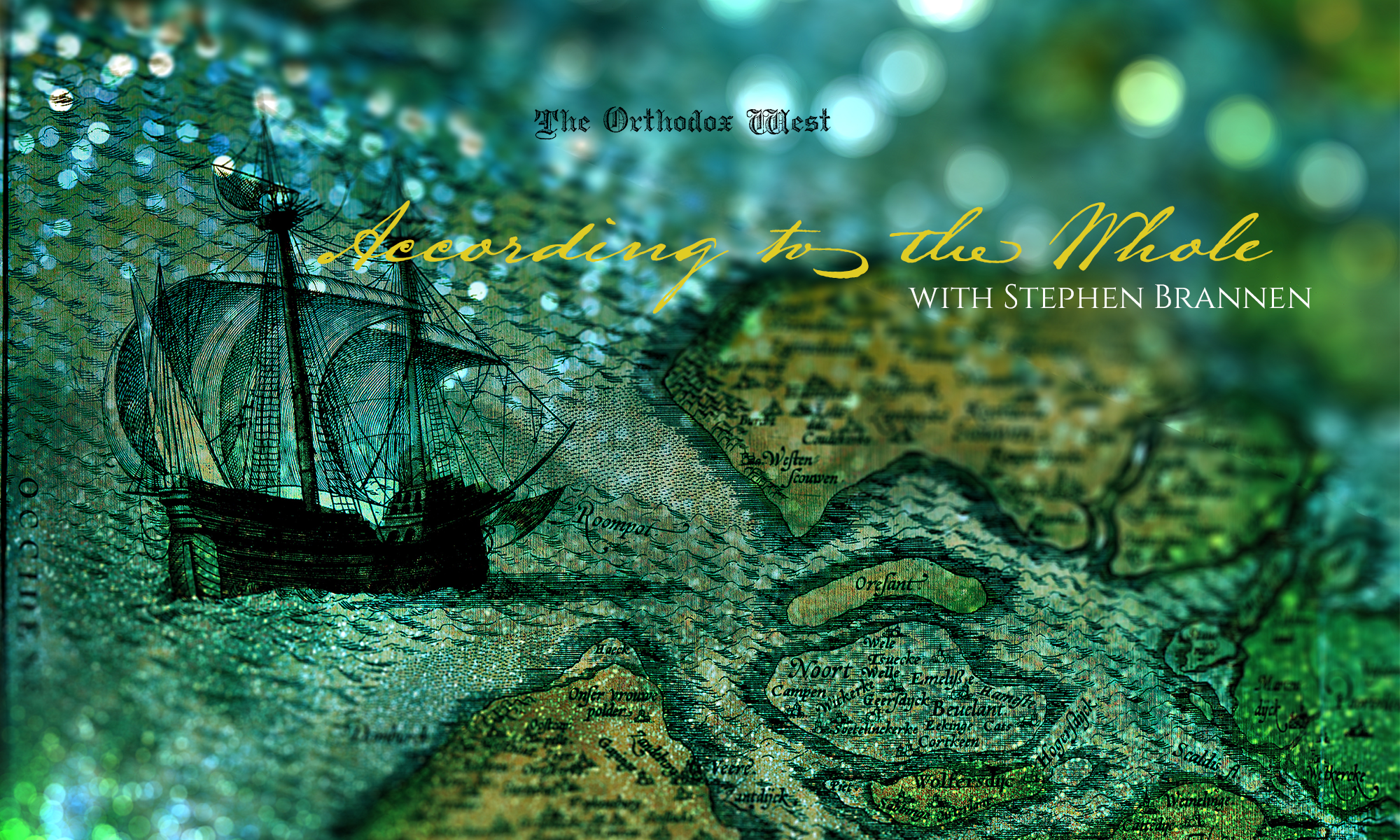
At the Vespers of Dominica Prima Passionis, or Passion Sunday (the 5th Sunday of Lent), all of the Icons, statues, crucifixes, and other images of Christ and the Saints are veiled from sight in Western Rite churches. This custom probably seems troubling to Eastern Rite Christians, but rest assured, it’s troubling to those in the Western Rite, too. Upon entering the church at Vespers or on the Sunday morning following and seeing purple veils draped over all of the familiar and beloved images, the faithful are significantly impacted spiritually and psychologically. It’s never pleasant to have that which you love hidden from you.
The practice of veiling the images probably derives from the large Lenten veil that would hide the Altar for the duration of Lent (the velum quadrigesimale or velum templi), a practice possibly begun in the 9th century. This practice was consonant with the already ancient use of the altar curtains which would close and open at different parts of the Liturgy. But the Lenten veil was season-specific and symbolically identified the entire congregation with the ancient “order of penitents” for the entirety of Lent.
Eventually the general Western custom came to be to veil not the entire Altar but just the central figure of Christ on the Altar–the Cross/Crucifix–and then (since the servants are not greater than the master) to also cover all the images of the Saints as well. And the timing of this solemn veiling was changed from the beginning of Lent to the beginning of Passiontide, the final two weeks of Lent. This especially penitential period has extremely ancient origins, noted even by St. Leo the Great in the 5th century: “Indeed all the other seasons form a preparation for a reverent and worthy approach to [Pascha], but these days of Passiontide [dies éxigunt, or “concluding days”] demand our greatest devotion, for they immediately precede that supreme Sacrament of the Divine mercy.”
Another clue we have for the veiling of the images at Passion Sunday is in the Gospel reading for the Mass on this day. In St. John 8:46-59 we hear that after increasing hostility to Jesus from the Jewish religious leaders as he taught in the Temple, “they took up stones to cast at him; but Jesus hid himself…”. The hiding of Christ behind veils identifies us, shockingly, with the stone throwers in the Gospel reading.
Now, of course we don’t want to throw stones at our Lord, but we do acknowledge that our sins are responsible for his passion, his suffering. Before the people bent to pick up stones, their hearts turned from being open to Jesus to being closed to him. They rejected him, and he hid himself from them. The hiding of Christ’s image forces us to ask ourselves if and where we’re still rejecting Christ in our own lives and hearts. It gives us occasion to mourn the necessity of Christ–the full revelation of God–having to hide himself. It (hopefully) makes us want to seek him out; this visual fast makes us desire to see him even more.
And this is only a fast, not a permanent reality. The issue of timing is important here, because God (the Creator of time) is the master of timing. In the Gospel account, Jesus hid himself not to avoid death altogether (his glorious death was always part of his plan), but only because, as St. John put it a few paragraphs before, “his hour had not yet come.” So it’s at the appointed time, when his hour finally has come (that is, on Good Friday), that the Church removes the veil to behold Christ’s glory.
This hour–when Christ fulfills the prophecy in Genesis by leaving his Father in heaven and his mother on earth to be made one flesh with his bride, naked and fully revealed on the cross–makes the veils that come off at this point like wedding veils. They were never meant to obscure our sight out of punishment or cruelty or evil purposes, but for the sake of meetness, the increase of desire, and the increase of reward.
These veils are aids both to mourning and to rejoicing. They, like the Crucifix they eventually reveal, are paradoxical. In their very purpose of hiding, they reveal things to us about ourselves. They help us develop a spiritual mind, so that when they are removed and we behold Christ on the Cross, we know how to both mourn and rejoice at the same time. It’s not ambiguity we encounter, but holy Paradox: Christus Victor who slays death with his Death. And these veils, being only for a time so that they may reveal the Crucifixion for what it truly is, also remind us of our eschatological vision when “we shall see Him as he is” (1 Jn 3:2).
